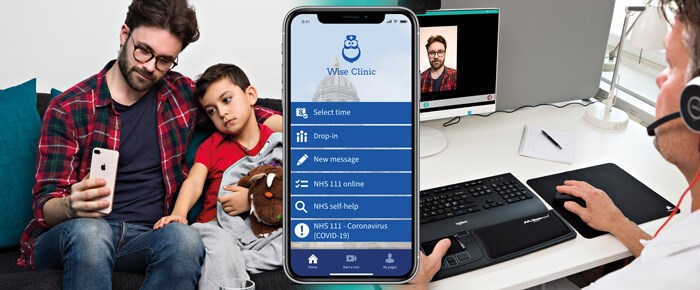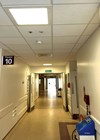At the beginning of 2020, video conferencing and phone consultations accounted for less than 1% of all consultations. Now it is probably 70%. Whilst there are many remote consultation solutions available, Tina Marshall describes what the ideal solution should look like.
COVID-19 brought on the demand for an alternative for face-to-face appointments and caused the digital advancement in healthcare to happen over the course of weeks, rather than five years as set out in the NHS five-year-plan. Not only did it change the structure of how healthcare providers provided care, but also how patients received care.
Both patients and healthcare providers are becoming more accustomed to, and empowered by, IT solutions. They are beginning to increase their expectations on quality and delivery of care via digital channels, so we need to begin assessing the quality and value of the solutions that we are offering. Over the past four months we have witnessed trends in how the new and ‘easy-to-use’ solutions that claim to be able to meet the demands of the patients soon became overwhelmed by said demands and expectations, resulting in platforms crashing and long downtimes. So now we can begin to focus on how we can provide a successful experience through delivering SMART solutions.

Visiba Care white-label customised patient portal.
Deloitte put forward the idea that for a solution to be successful it should meet the five SMART requirements: straightforward, measurable, agile, reliant, and tailored [1]. A straightforward and easy-to-use solution that is patient-focused and is accessible by the majority population. It does not matter if the solution is designed by a team of experts - if it is not designed with the patient at the focus, then it is unlikely to succeed.
“Deloitte put forward the idea that for a solution to be successful it should meet the five SMART requirements: straightforward, measurable, agile, reliant, and tailored”
If the solution is straightforward and easy to use, then the improvement in efficiency, effectiveness, and quality of patient care should be measurable.
The experience of both patients and healthcare professionals will be impacted by how agile and easy it is to maintain. We currently face the issue that while new solutions emerging are inherently inexpensive, they are also emerging quickly with a lack of proven experience and capability. For a positive experience for all users, it is crucial to consider the quality of the solution, one factor being the form of uptime percentage. Comparing solutions with a strong heritage and proof of quality assurance - such as a CE mark, DS&P toolkit, or Cyber Essentials Certificate - to a new solution with constant downtimes and platform crashes, proves to be unreliable and not only impacts the patient’s experience and trust, but also the experience and trust for the healthcare provider.
As mentioned, if a patient does not find it easy, they will not use it. However, a solution should be developed with healthcare provider needs taken into consideration as well. The solution should be reliant on collaborative working with the care providers and industry innovators. In a setting such as health and social care, the pace of which we adopted and integrated IT innovations into the delivery of care is astounding. So now we can begin to move forward with less haste and more consideration to map and blueprint what a ‘good’ quality and reliable solution can look like.
“In a setting such as health and social care, the pace of which we adopted and integrated IT innovations into the delivery of care is astounding”
Finally, tailoring to the needs of the end user helps deliver a dynamic, finely tuned solution. Nevertheless, a solution should not be expected to work blindly for everyone, so one cannot help but wonder whether some of the created-overnight solutions are successfully supporting their users. For a sustainable and fit-for-the-future system, resources need to be patient focused and lead to a better patient experience. If the solution is developed to enable all users access regardless of their technical ability, rather than designed for those who do not wish to access the solution, such resources can then be used to care for the groups who require extra attention in a more analogue way.
Reference
1. Closing the digital gap: Shaping the future of UK healthcare. Centre for Health Solutions. 2019.
www2.deloitte.com/content/dam/Deloitte/
uk/Documents/life-sciences-health-care/
deloitte-uk-life-sciences-health-care-
closing-the-digital-gap.pdf
Last accessed September 2020.






